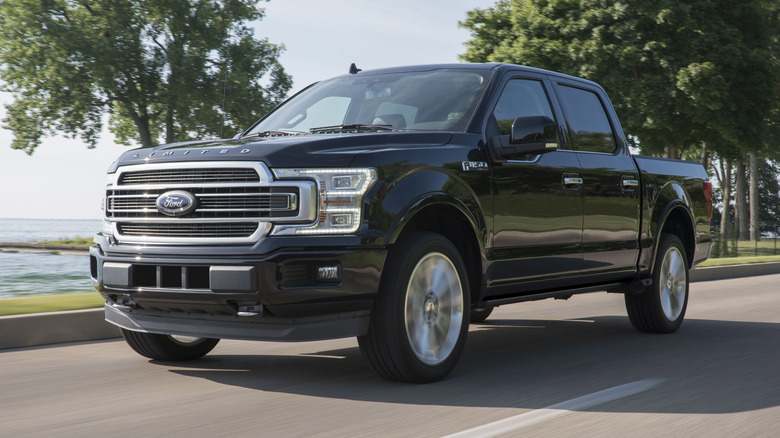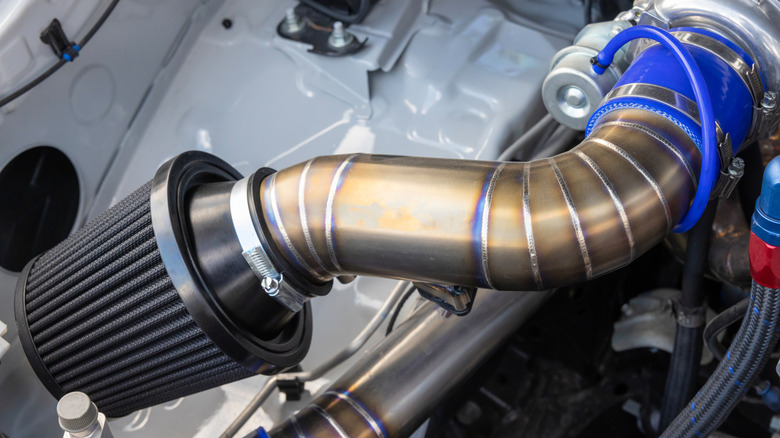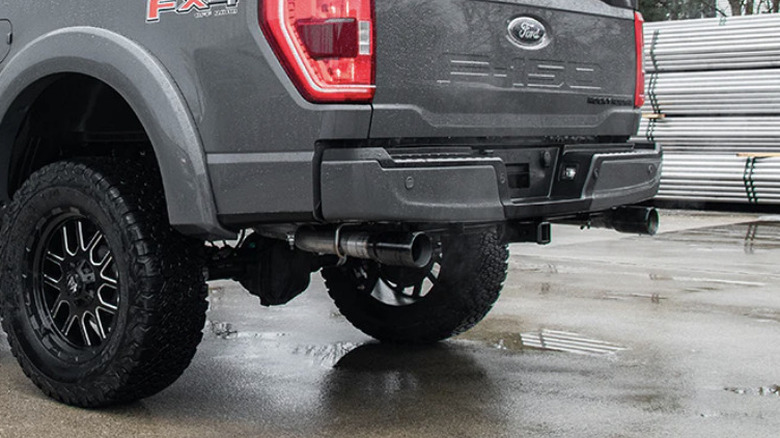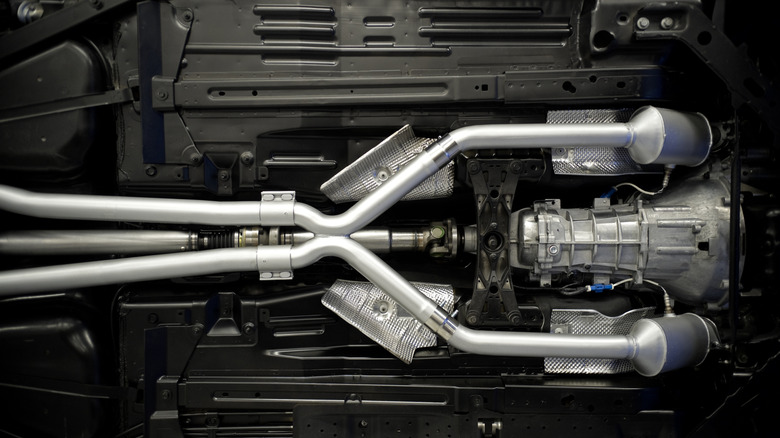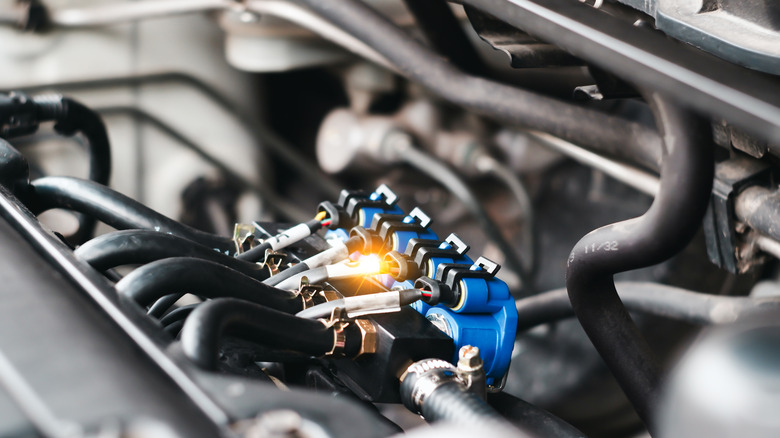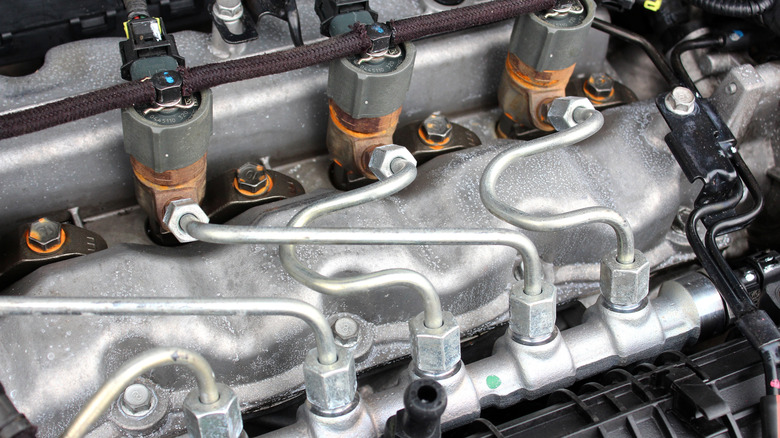6 Best Performance Upgrades For The Ford 3.5L EcoBoost Engine
We may receive a commission on purchases made from links.
The Ford 3.5L EcoBoost V6 is considered to be a top-notch engine and is the powertrain that transformed the Ford F150 into one of the most powerful towing pickup trucks ever built. Beyond the F-150, the EcoBoost has been used in various Ford vehicles, including the Expedition, Explorer, Transit, Ford GT, and the current Bronco. First introduced in 2011, when V8 engines reign supreme, the Ecoboost V6 still pushed through and set new benchmarks for performance. Today, this twin-turbocharged engine outperforms traditional V8s by delivering impressive torque, towing capability, and fuel efficiency in a more versatile package.
As someone who has spent countless hours optimizing EcoBoost engines, I know how to unlock a lot of horsepower with even minor upgrades. I've worked with first-generation (2011–2016) and second-generation (2017+) EcoBoost engines, which deepened my appreciation of the engine's design and upgradability.
With Ford phasing most of its V8s — except for the 5.0 Coyote and a select few –the EcoBoost V6 has become a favorite among many enthusiasts. The current engine iteration makes 400 horsepower in the F-150, while the Gen2 version found in the Ford Raptor and Limited/Platinum trims kicks out 647 horsepower. With a tuner, downpipes, and an intake, you can crank the output even higher, and the Ford 3.5L EcoBoost engine offers no shortage of performance upgrades to help you do just that.
Cold air intakes
Installing a cold air intake is the simplest and most effective performance upgrade for the Ford EcoBoost V6. While the stock intakes are adequate for daily driving, they're known to restrict airflow, especially in high-performance scenarios. This is because manufacturers often prioritize packaging, cost, and emissions compliance over performance, intentionally designing a system that doesn't allow maximum flow. On the other hand, aftermarket intakes draw the much cooler and denser air into the engine. This allows the engine to burn fuel more efficiently, giving the EcoBoost V6 some noticeable horsepower gains.
One of the most popular air intakes for the 3.5L EcoBoost V6 is the Banks Ram Air Intake System, which reduces airflow restriction by 64.6% compared to a stock intake and can also improve fuel economy. For the Gen 1 engines, the K&N Cold Air Intake Kit is an excellent choice, offering 12.3 horsepower and up to 25 lb-ft of torque, making it a top choice among enthusiasts.
Tuning your 3.5L EcoBoost engine's ECU
Tuning is an effective way to increase the power output of the EcoBoost V6 engine without the need for extensive disassembly. A basic tune involves remapping the vehicle's powertrain control module (PCM). This process adjusts parameters like ignition timing, transmission shift points, and boost levels, which essentially unlock additional horsepower, torque, and throttle response. What makes the 3.5L EcoBoost engine particularly interesting is its strong responsiveness to tuning, whether it's box or custom tuning.
Box tuning utilizes tuners that are preloaded with general-purpose tunes, which offer a preset setup. However, the amount of horsepower gained from box tuners depends on the supporting modifications. For instance, CRTD4 box tuners add up to 40% more horsepower, while increasing the fuel economy by 20%. Some of the most popular box tuners include Bully Dog BDX and Edge Evolution CTS3. Custom tuning is considered a better upgrade because it tailors the performance to your driving needs. Rather than working with presets in a plug-and-play system, custom tuning allows you to perform specific goals, like more horsepower or extra towing capacity. However, custom tuning is far more advanced. You'll need to send ECU data to your tuning provider, then use devices like the SCT BDX to download the custom tunes from the cloud to install.
Upgrade the exhaust system
An exhaust system is a classic upgrade that enhances performance by reducing back pressure and increasing airflow. The improved airflow reduces exhaust gas temperatures (EGTs), which, in turn, improves the engine's efficiency and longevity. Most of these systems also give your vehicle a much deeper, throatier exhaust note, with the added benefit of an upgraded vehicle look.
When it comes to exhaust systems, you're limited to two options that enhance your vehicle's performance. A resonator-back system exhaust system mainly focuses on sound enhancement rather than horsepower gains. This involves placing a resonator between the muffler and the catalytic converter, which cancels out certain frequencies and high-pitched noises before they get to the muffler. The resonator comes in a cylindrical box shape with a central hole and features special cladding material that silences some exhaust notes.
Cat-back exhaust, a more desirable and yet pricier option of the two, replaces everything from the catalytic converter to the tailpipe. Besides improving the sound, cat-back systems are more geared towards increasing horsepower. If you want to get the most out of your exhaust system, pair them with other modifications, such as tuning or air intakes.
Upgrade to high-flow downpipes and the turbo
High-flow downpipes are an important upgrade to the turbocharged 3.5L EcoBoost V6 when it comes to unlocking your engine's full potential. These are tubing sections that sit between the exhaust manifold and the exhaust side of a turbocharger. In stock form, the downpipes contain the restrictive catalytic converters that create back pressure. The result is reduced exhaust flow and poor turbocharger performance.
In contrast, the high-flow downpipes increase the airflow, allowing the engine to breathe out exhaust gases more freely. With the reduced restrictions, back pressure decreases along with EGTs. Upgrading to downpipes can increase power output by anywhere between 10 and 20 horsepower, depending on whether you pick catted or catless downpipes. The difference between these two types lies in their purpose. While catted downpipes allow for improved exhaust flow while including a catalytic converter, catless downpipes do not include a catalytic converter, which is how they get their name. The latter is often used in racing applications or scenarios where emissions aren't a concern.
Besides the impressive output of 400 horsepower of the 3.5L EcoBoost engine, its twin-turbo setup is one of its defining features. If that feels underpowered, consider upgrading the turbochargers to unlock more horsepower. The new turbo upgrades increase airflow into the engine to increase boost levels while improving combustion. However, the final power rating will also depend on supporting mods and tuning. That said, turbos work best with supporting upgrades like high-flow fuel injectors and enhanced cooling systems.
When it comes to turbos, the larger, the better. If you're going to upgrade, consider larger turbochargers, as they improve drivability and can increase an engine's horsepower by more than 30%. However, larger turbochargers are also notorious for causing turbo lag at lower speeds.
Install water/methanol injection
The water/methanol injection is a cool way to upgrade the EcoBoost V6 engine by maximizing its performance. This system helps prevent detonation, or pre-ignition, which can cause engine damage. It also reduces knocking and lowers combustion temperatures, which unlocks more horsepower while improving engine reliability. The water/methanol injection can boost horsepower by 25–45, and sometimes as much as 60 horsepower. The water/methanol injection process is relatively straightforward: a mixture of water and methanol is injected into the intake air. The mixture acts as a natural steam cleaner that removes carbon deposits from intake ports, while, as a side benefit, increasing the octane rating that allows for more spark timing.
Since the water/methanol injection reduces knocking sensitivity, it supports more aggressive tuning. So, in addition to the horsepower gained through the injection process, tuning can unlock extra power. The progressive injection systems automatically adjust the flow rate and keep the fuel-air ratio balanced at all times, with several fail-safe features that can shut the entire system down.
It also keeps the engine performing optimally without over-injection and prevents hydro-locking issues. You can also combine the water/methanol mixture with E85 for a maximum cooling effect and increased octane levels. Before you go on with this EcoBoost engine upgrade, make sure your vehicle's engine management system is properly tuned to accommodate water/methanol injection.
Upgrade fuel system components & an E85 tune
Another way to fully unlock the Ford 3.5L EcoBoost engine's potential is by improving the fuel system, especially when you plan to introduce advanced tuning setups later. Upgrading the car's fuel system involves replacing several components, such as fuel injectors, lines, and fuel pumps. To take performance to the next level, you can even throw in ethanol-compatible (E85) systems, but you'll need to take a few extra steps to get there.
Because the stock system wasn't designed to handle E53, which requires high flow, you have to convert the Ford 3.5L EcoBoost engine to E85 with aftermarket modifications. The new fuel system should include an ethanol-compatible fuel pump and injectors, such as the High-Pressure Direct Injection Fuel Pump and universal BL3E-HB fuel injectors nozzles injectors, respectively. While upgraded injectors provide fuel atomization for better combustion, high-flow fuel pumps give a more effective fuel delivery, and support a higher power output. Then, you will likely need a custom E85 tune.
An E85 tune involves recalibrating the engine's computer to increase fuel injector flow and optimally run the E85 fuel, which contains 85% ethanol and 15% gasoline. With a higher octane rating, the E85 fuel allows for increased boost levels and ignition timing compared to other fuels. It also burns 30-35% faster than gasoline, giving you increased horsepower and torque levels that are further supported by enhanced fuel delivery. On top of that, ethanol fuel has a higher knock resistance.
